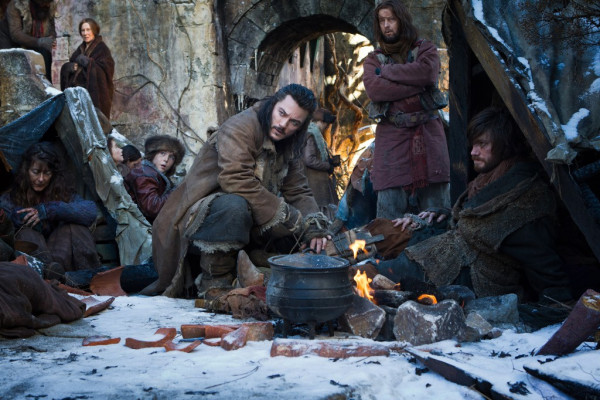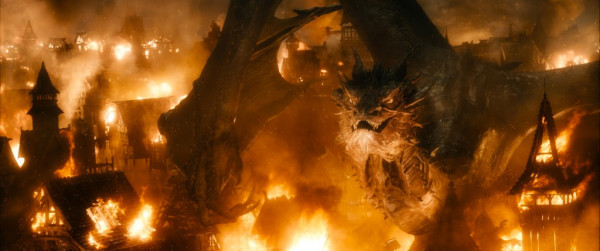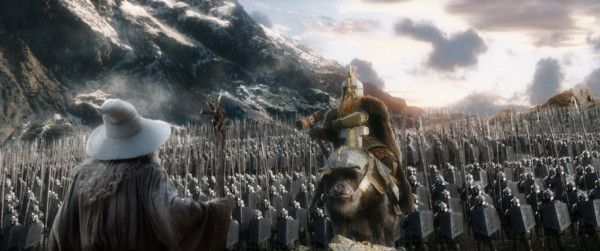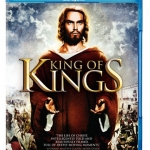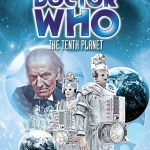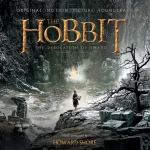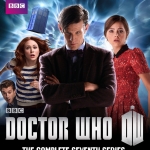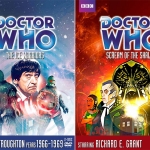The Hobbit: The Battle of the Five Armies concludes the film trilogy, based on the book The Hobbit, and is the sixth movie for the Peter Jackson-helmed Middle Earth saga. Now, it’s available on Blu-ray and DVD.
The 3-Disc Blu-ray/DVD Combo package contains the movie in Blu-ray and regular DVD versions, a code for the Digital version, and a Special Features DVD. A trend has started in the industry that doesn’t include the regular DVD in the combo packages. I’m glad to see Warner Bros. is not yet following this pattern. If you’re already a fan of Battle of the Five Armies from the cinema release, the wait to watch it anytime is over. For those who’ve been waiting for the DVD release to watch the movie, this article may contain spoilers.
While I am a huge Tolkien fan, I am not a purist when it comes to filmed versions of books I love. Some changes to story or characters don’t bother me as long as they fit the reality of the world. The question I always ask is: “Could this story have happened that way in this world?” For Peter Jackson’s vision of Middle Earth and his handling of the stories, that answer for me is yes. I’ve enjoyed and been mostly satisfied with each film, including the previous releases in The Hobbit Trilogy. I’m aware many Tolkien/Middle Earth fans disagree with a positive assessment of any of The Hobbit movies.
While those who are avid readers want to see their favorite books on the screen, many times they end up highly unsatisfied with the result because the visuals, characters, and dialogue didn’t match their own imagination. However, books and films are vastly different mediums. Films convey ideas visually and have a finite time span. Passages in books can describe just enough of a scene that a reader can fill in the details with the imagination. For example, a sentence from the book after Laketown (Esgaroth) is destroyed states: “Down the wind came the voices of the people of Esgaroth lamenting their lost town and goods and ruined houses.” In the movie, this scene takes at least 10 minutes to show as the devastated refugees land on the shore. With a film, writers and directors must ask themselves: “What does this look like for each person? How much time will be needed to show this?” No movie has enough run time to show every detail or event covered in a book.
Let’s face it, we all watched An Unexpected Journey and The Desolation of Smaug in preparation for this segment of the story. Most fantasy fans love a well-done epic battle. The Hobbit: Battle of the Five Armies delivers the epic battle. I found the movie a likeable and fitting end to the trilogy. There were instances that felt natural that created connections to the LoTR trilogy. The film story hits all the major beats in the book. For purists, I did pull out one of my copies of The Hobbit and compare. There is creative license, but seemingly less so than the first two installments.
Peter Jackson, the cast and crew, and WETA created a fully realized world for Middle Earth, populated with diverse races with their own history, culture, desires, and conflicts concerning the events in that world. In the book, there are references to other events across Middle Earth. I loved seeing those side stories like Gundabad and Dol Guldur fleshed out over the course of the trilogy. The sense of a complete Middle Earth helps the viewer believe in the reality of the visual information and the interactions of the people.
As The Battle of the Five Armies opens, it’s actually the real end of The Desolation of Smaug — Smaug’s destruction of Laketown. I understand why Jackson wanted to include the awesome Smaug in all three movies, but I think there are better places in the first segment of Five Armies to have ended Desolation. The visuals of the battle with Smaug are outstanding, but it feels like taking a step back in the story instead of forward.
Thorin falls deeper into the obsession with Erebor’s gold caused by the dragon sickness while armies gather outside the gates. It’s illustrated by the contrast between the solemn quietness inside Erebor and the noisy preparations for war outside. I did like the ironic twist that Bilbo was the one Thorin still trusted, yet he was the one who took the Arkenstone.
Jackson’s version of the story spends time exploring the relationships and attitudes of the different races toward each other: Men, Elves, and Dwarves. They stand on the brink of war with each other while a dreaded mutual enemy plans their own attack. This becomes the crux of the film story. Can they all set aside their differences and unite or will they be destroyed?
An epic movie cannot be epic without legendary figures. I was keen on the inclusion of the Dol Guldur sequences because it gives the viewer the opportunity to see Galadriel, Elrond, and Saruman in action, wielding their powers and employing their incredible combat skills. Epic movies also need a hero and villain to fight the climatic good/evil battle. Plenty of fans did not like the addition of Azog to the story. It brought a specific villain to embody the evil the hero fights against. It’s an archetypal storytelling device used in classic epics. I loved the majesty and breadth of the face-off between Thorin and Azog, a clash between two fierce warriors. Another element Jackson brought to the characters, especially the dwarves, was the showcase of each group’s fighting skills. One of my favorite scenes in the film is when the Iron Hills dwarves form up a double wall with their shields and pikes as the orc army charges. Next you know, elven warriors are leaping from behind the shield wall to engage the enemy. It’s a moment of beautiful cinematography and visual storytelling.
WETA and Peter Jackson are tops in the film industry when it comes to creating an epic battle. One criticism is Jackson’s tendency toward overkill on some themes, to the point it distracts from the story. Too much time is spent on Thorin’s brooding as he falls deeper into the greedy paranoia of the dragon sickness. Then, there’s the weird hallucinatory sequence when Thorin is fighting the hold of the sickness. Instead of one epic ending battle, he gives us several one-on-one battles to build up to the really epic battle. In places, the plot stretches thin due to too little story across too long a time — a 144-minute run time, and this is the theatrical version.
The special features on the Blu-ray/DVD Combo package are well-done and interesting. My favorite feature is Recruiting the Five Armies, a close-up look at the life of “extras” actors on set. All the features are great, but it’s short on overall content even compared with the two previous Hobbit theatrical DVD releases. As most fans of Peter Jackson movies have learned, the bulk of the “good” special features will be spread over the extended releases and box sets.
If you’ve been a fan of Jackson’s work on Lord of the Rings and The Hobbit trilogies, or if you love anything Middle Earth related, you’ll enjoy this DVD Combo package. If you don’t care for Jackson’s work, or you tend to be a purist, it may not be for you. I fall into the former camp, so I highly recommend adding The Battle of the Five Armies Blu-ray/DVD Combo to your collection.



